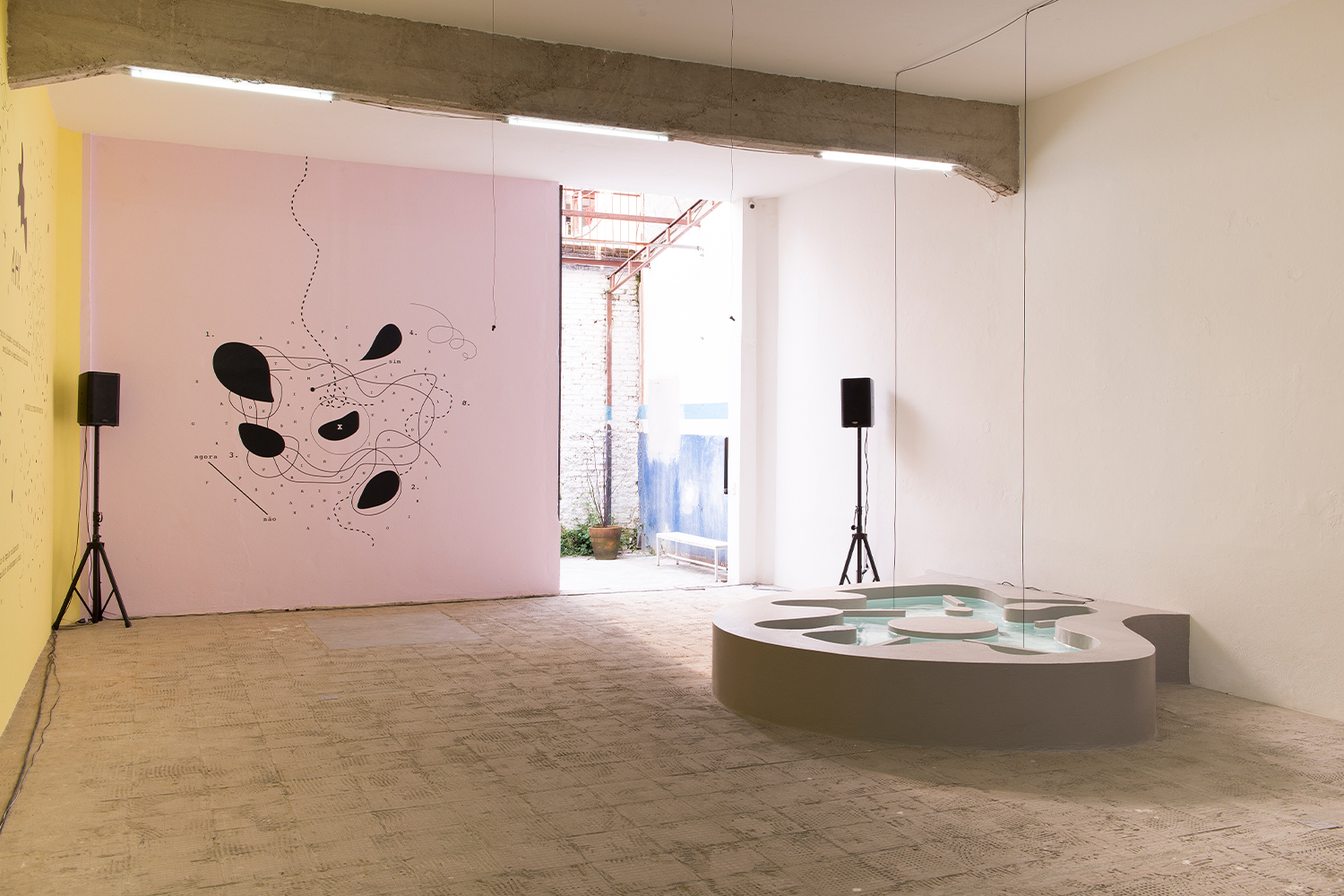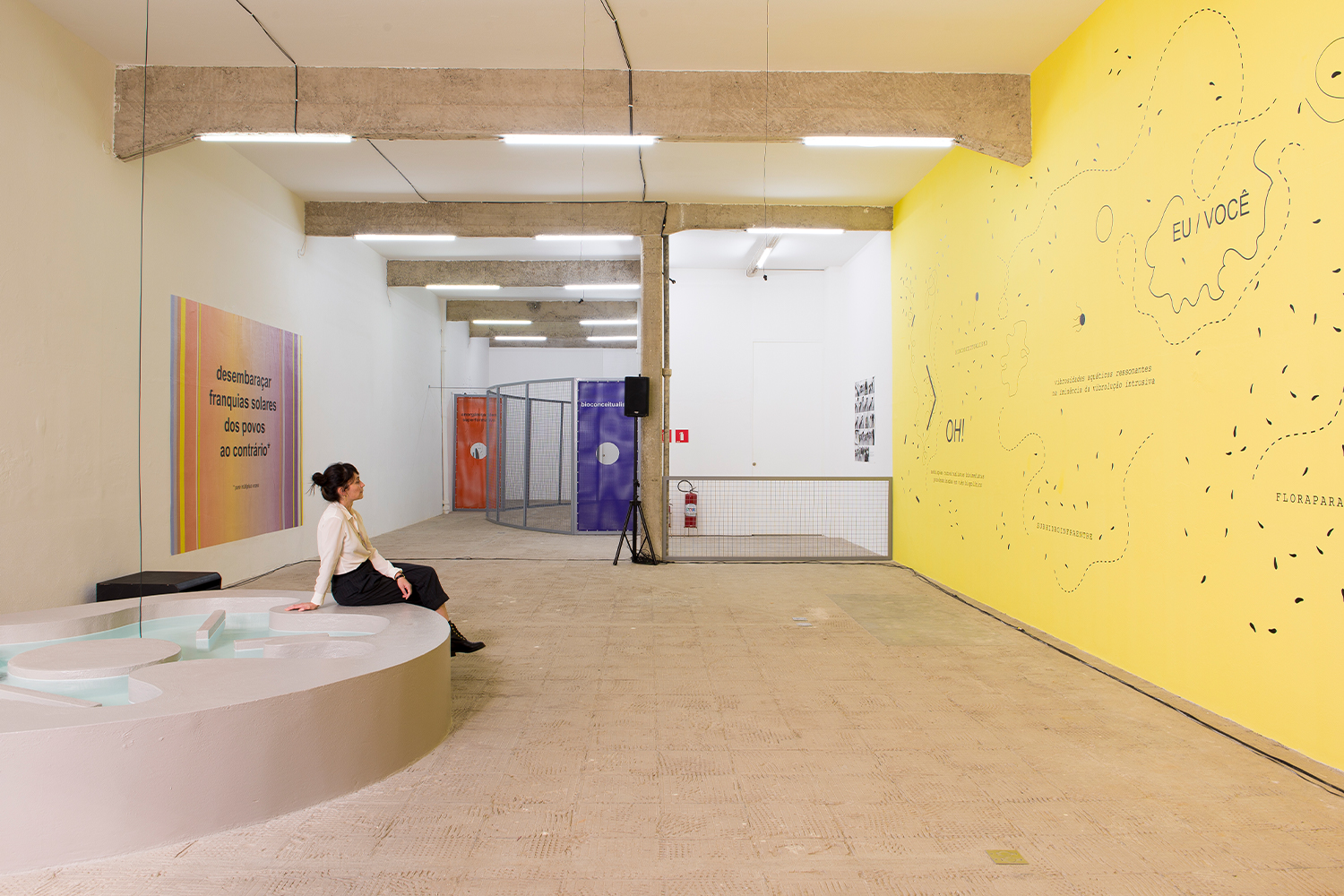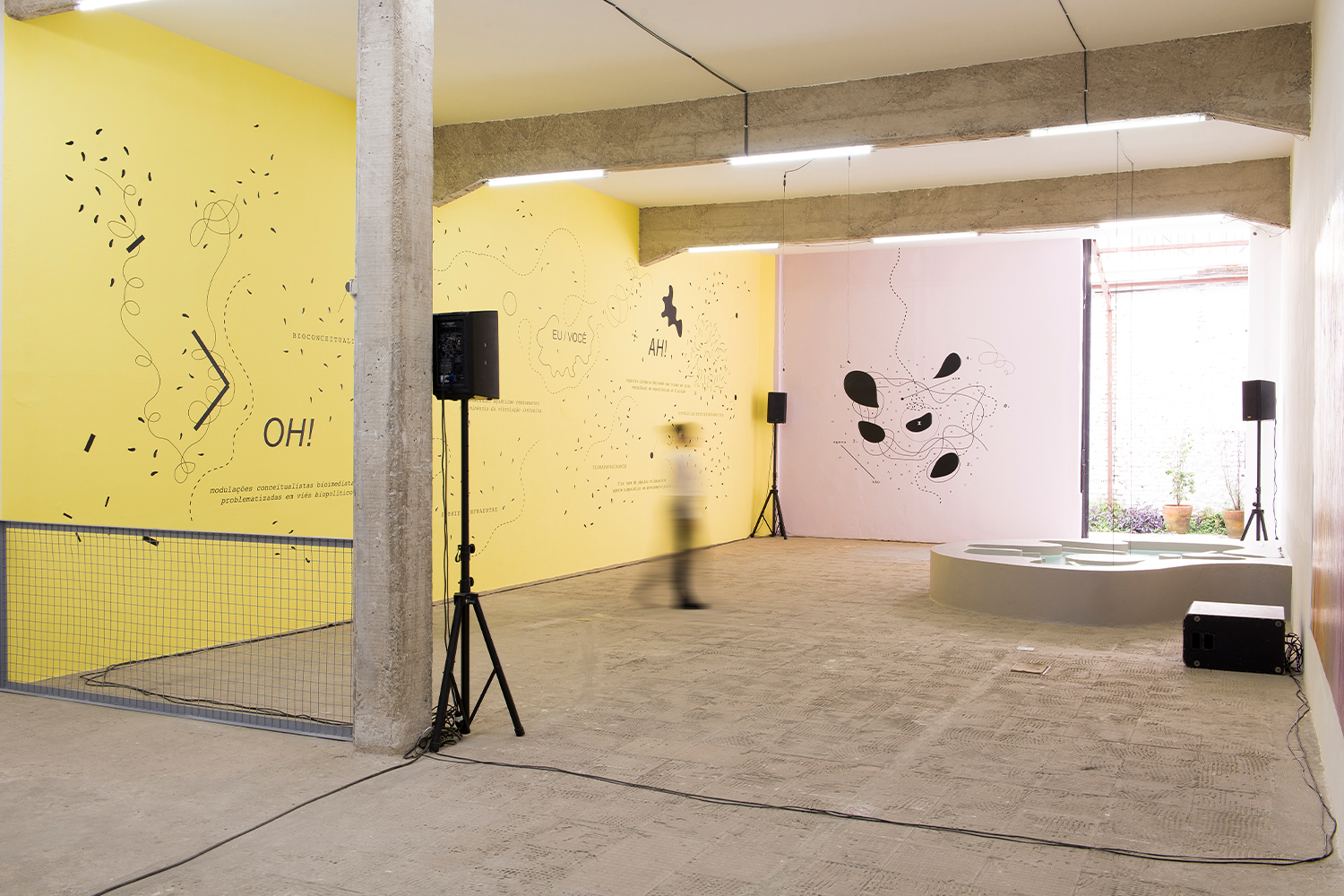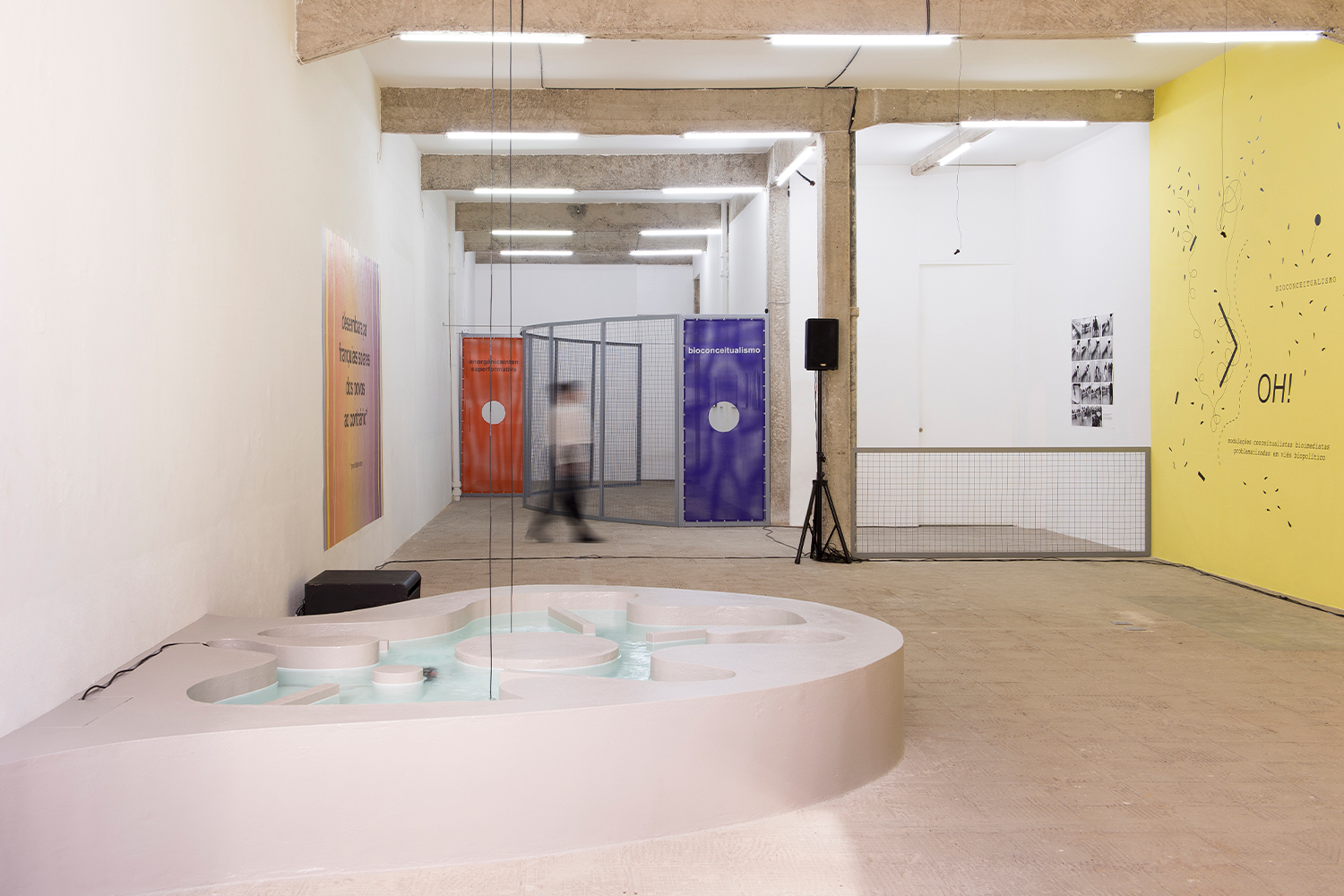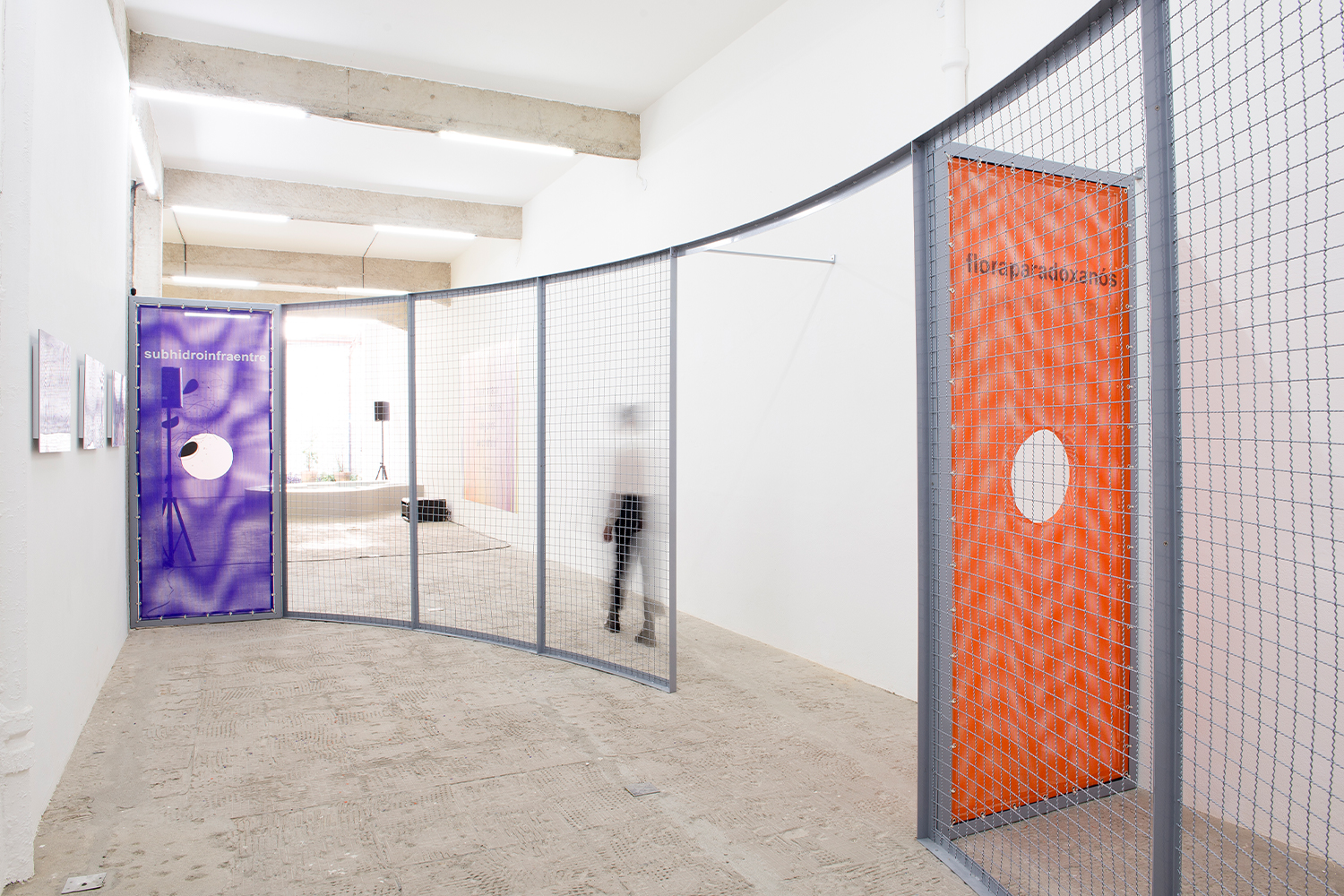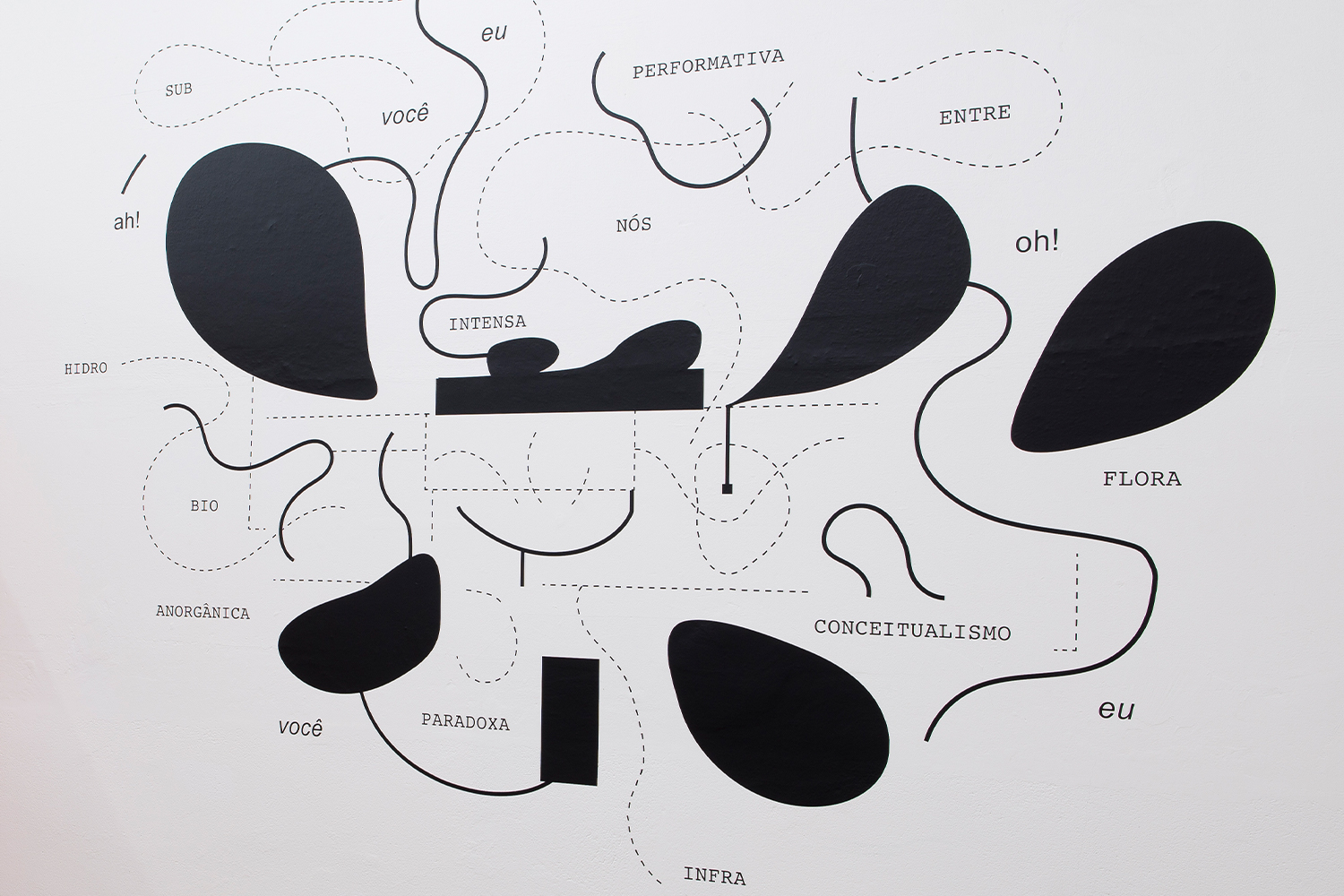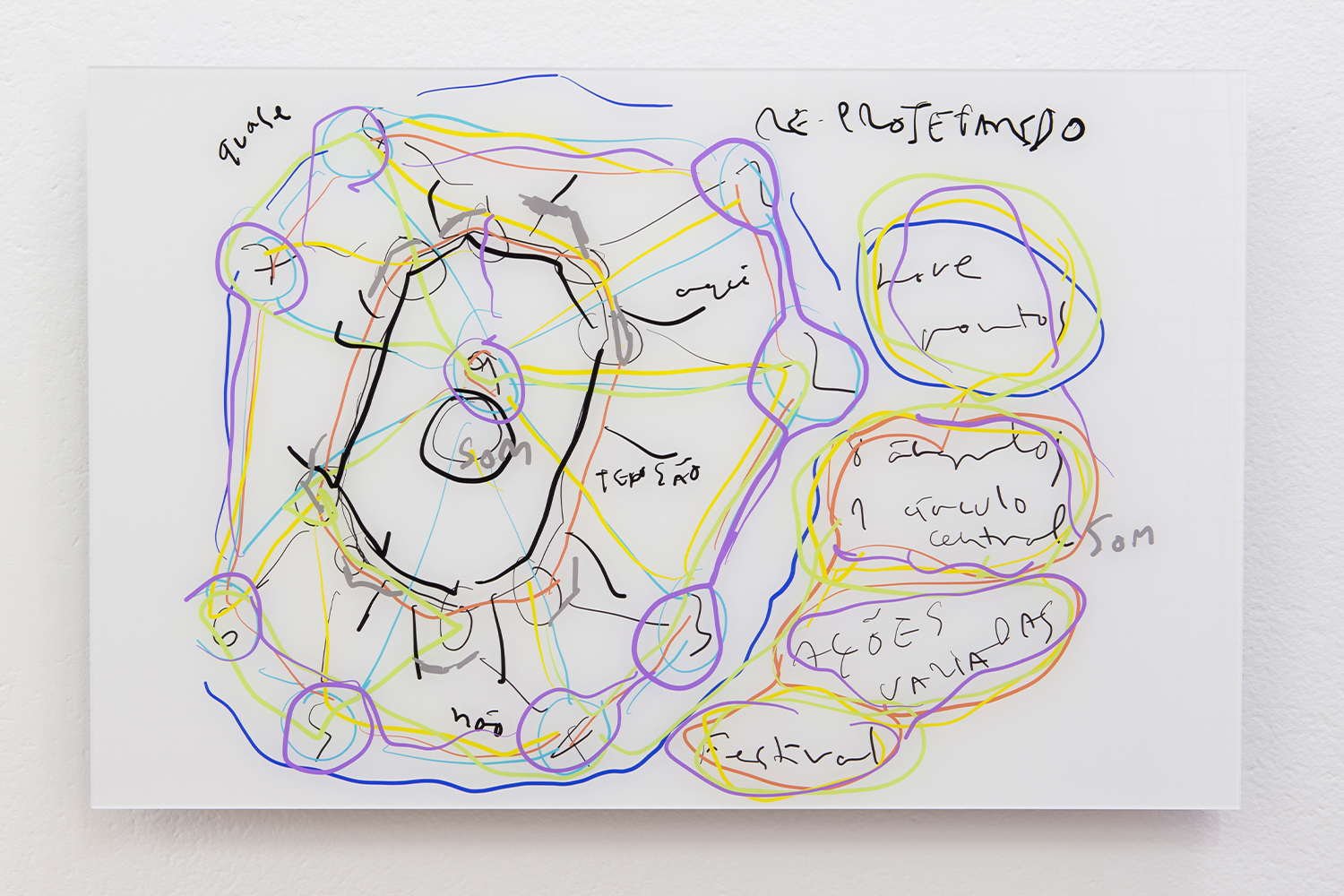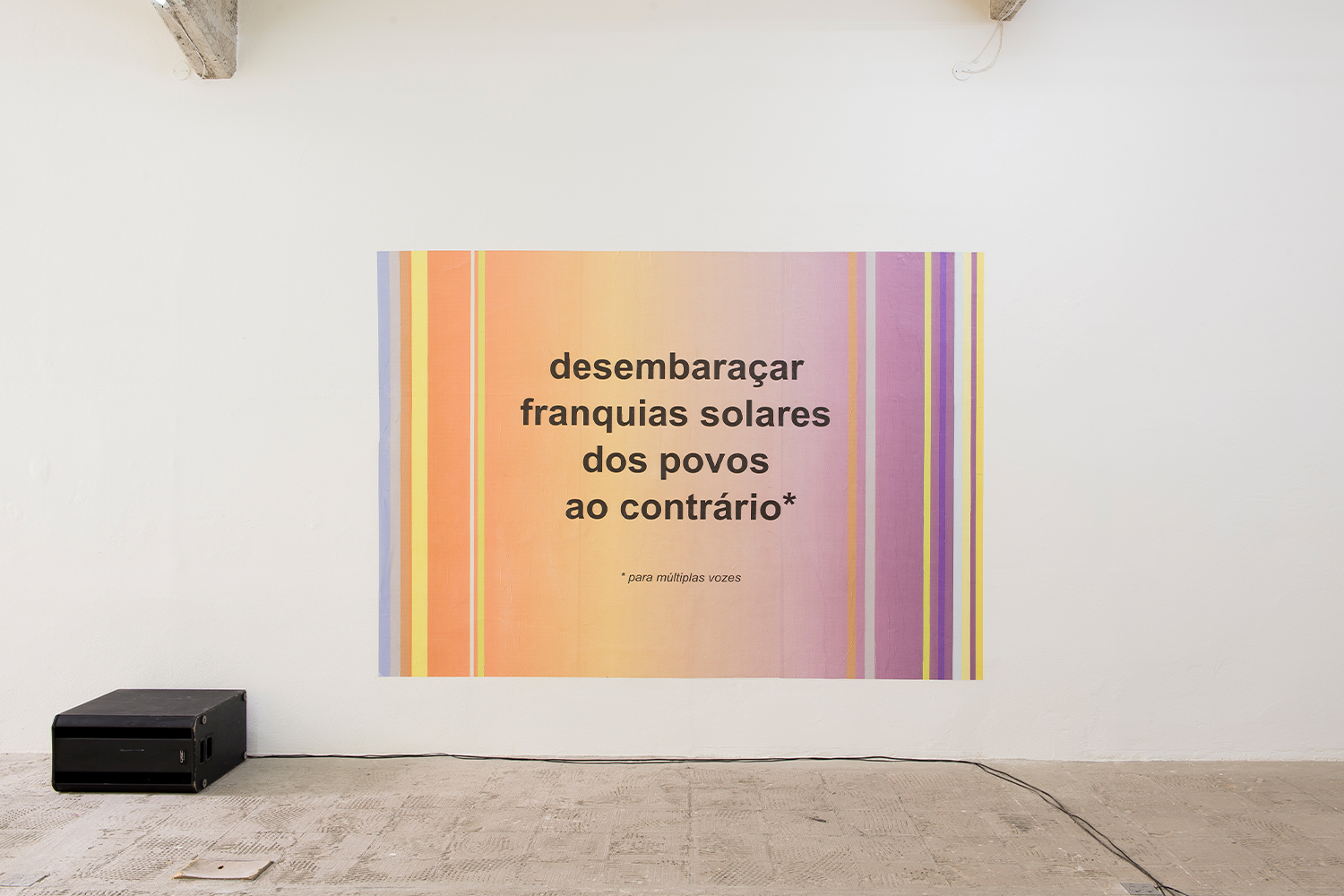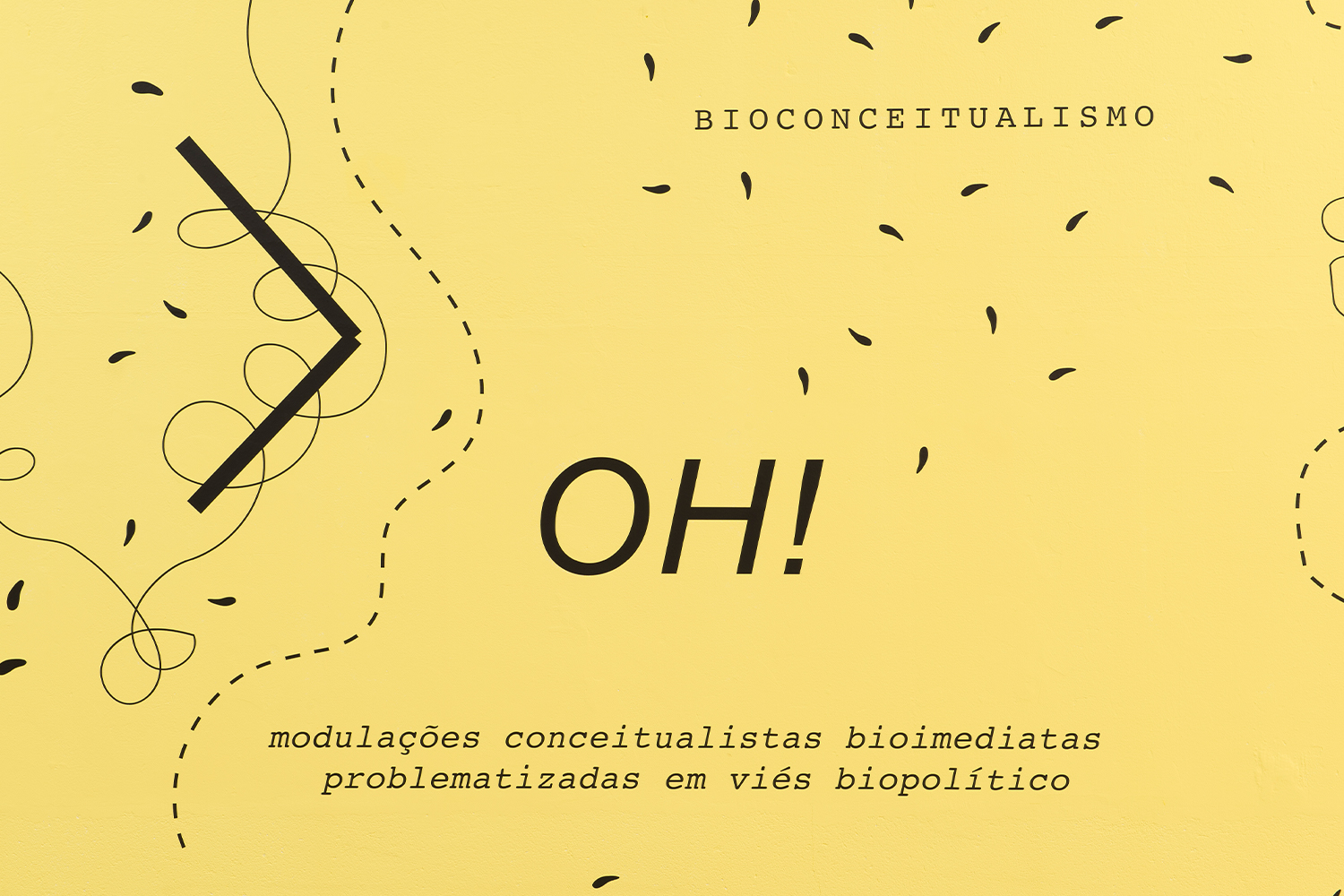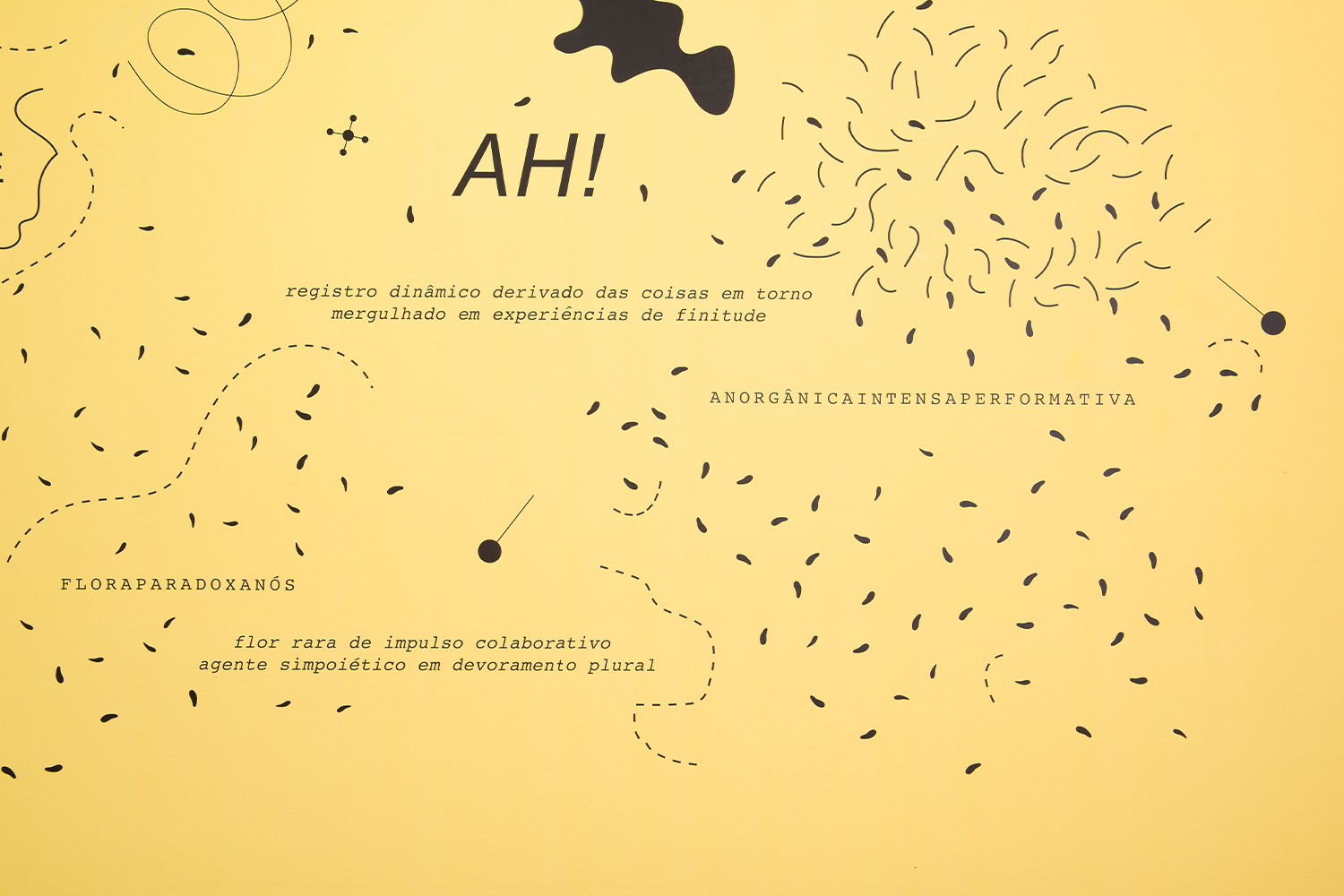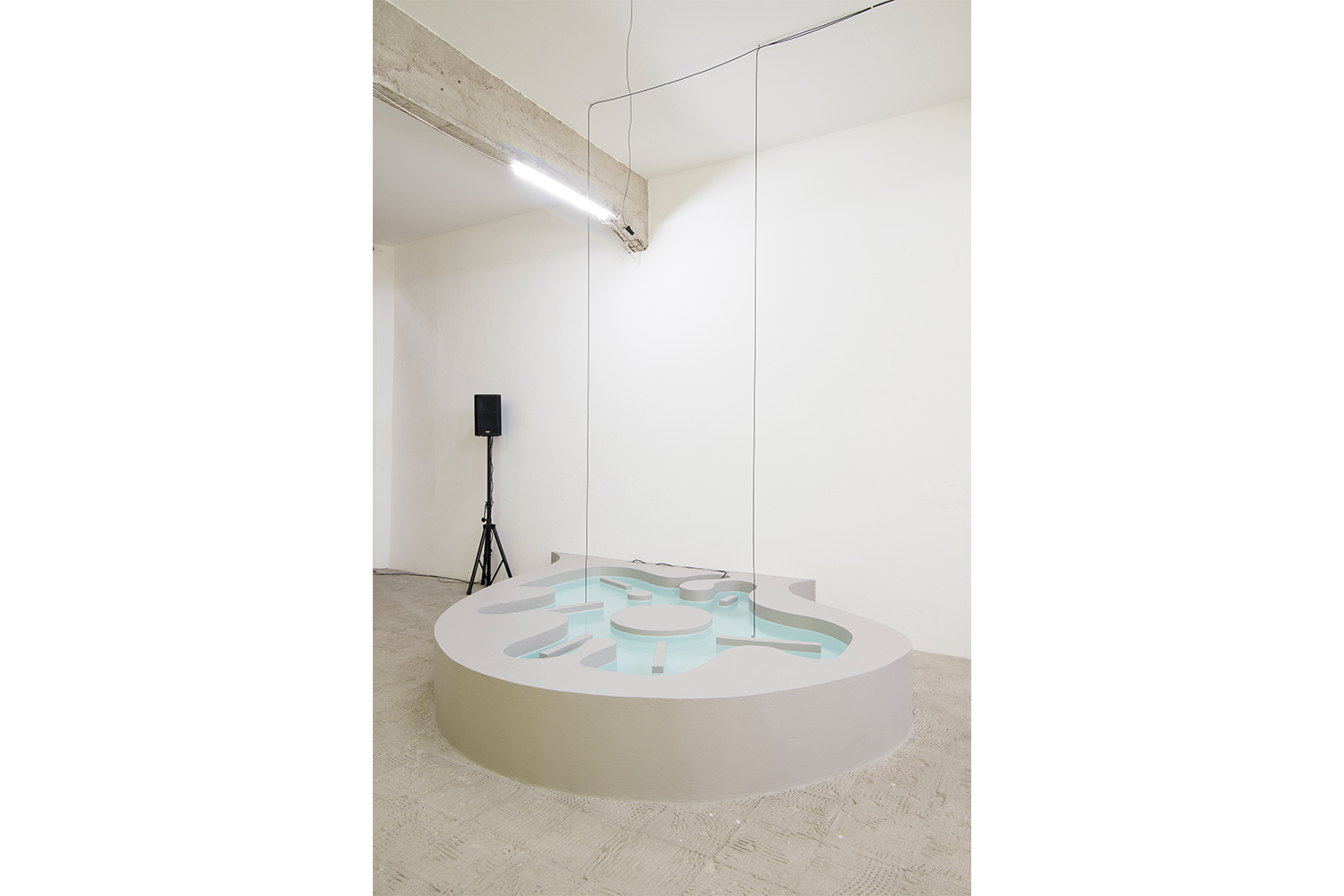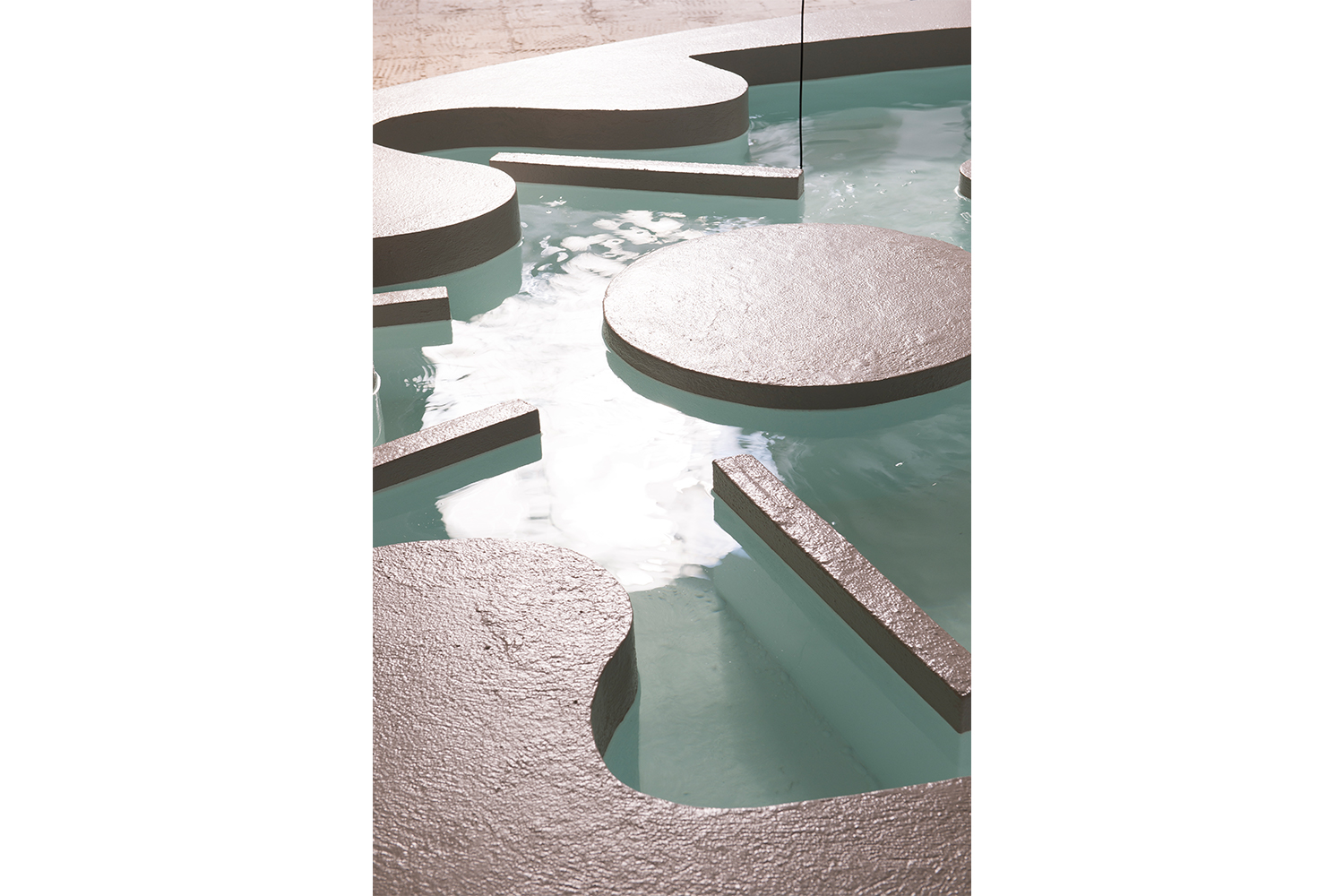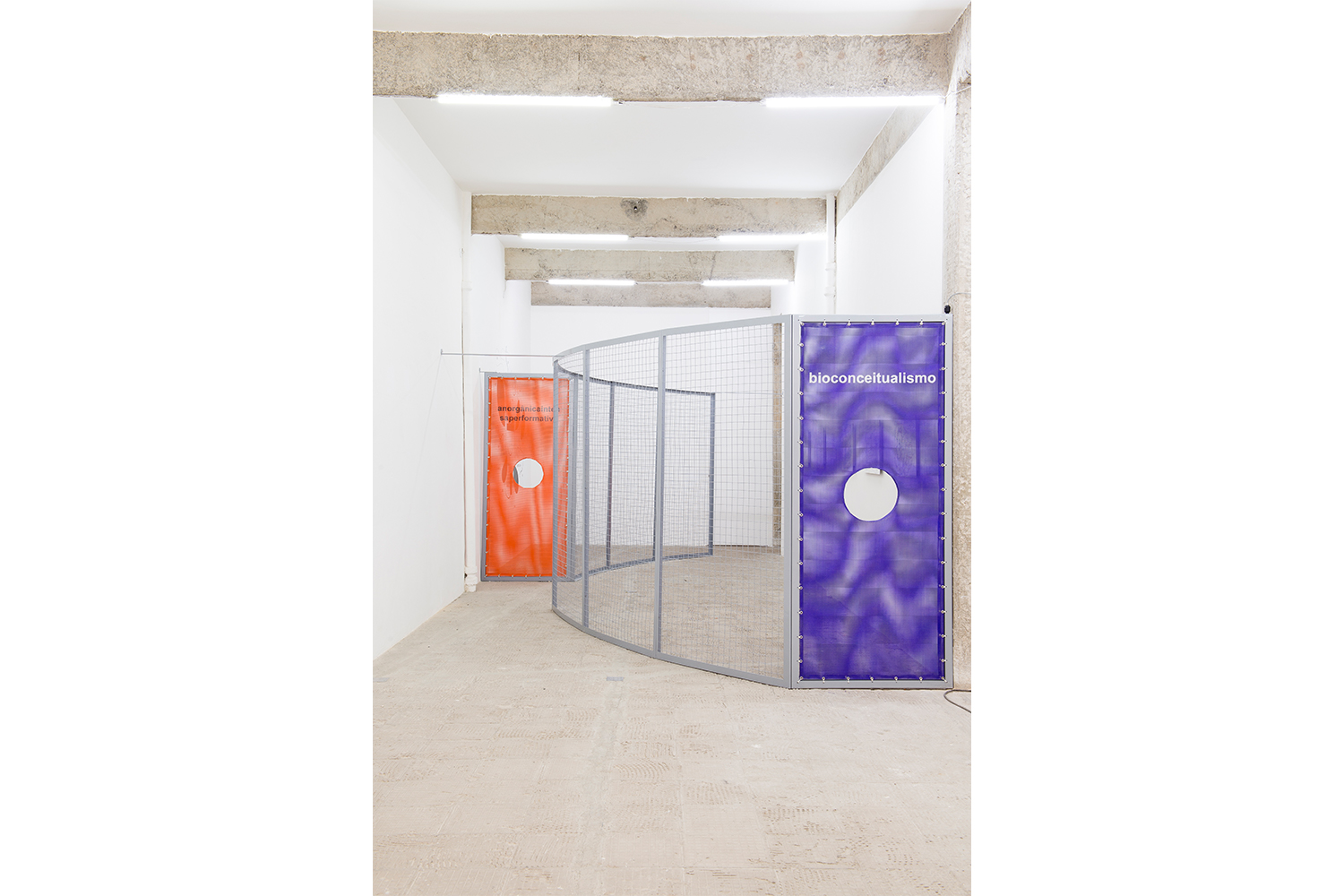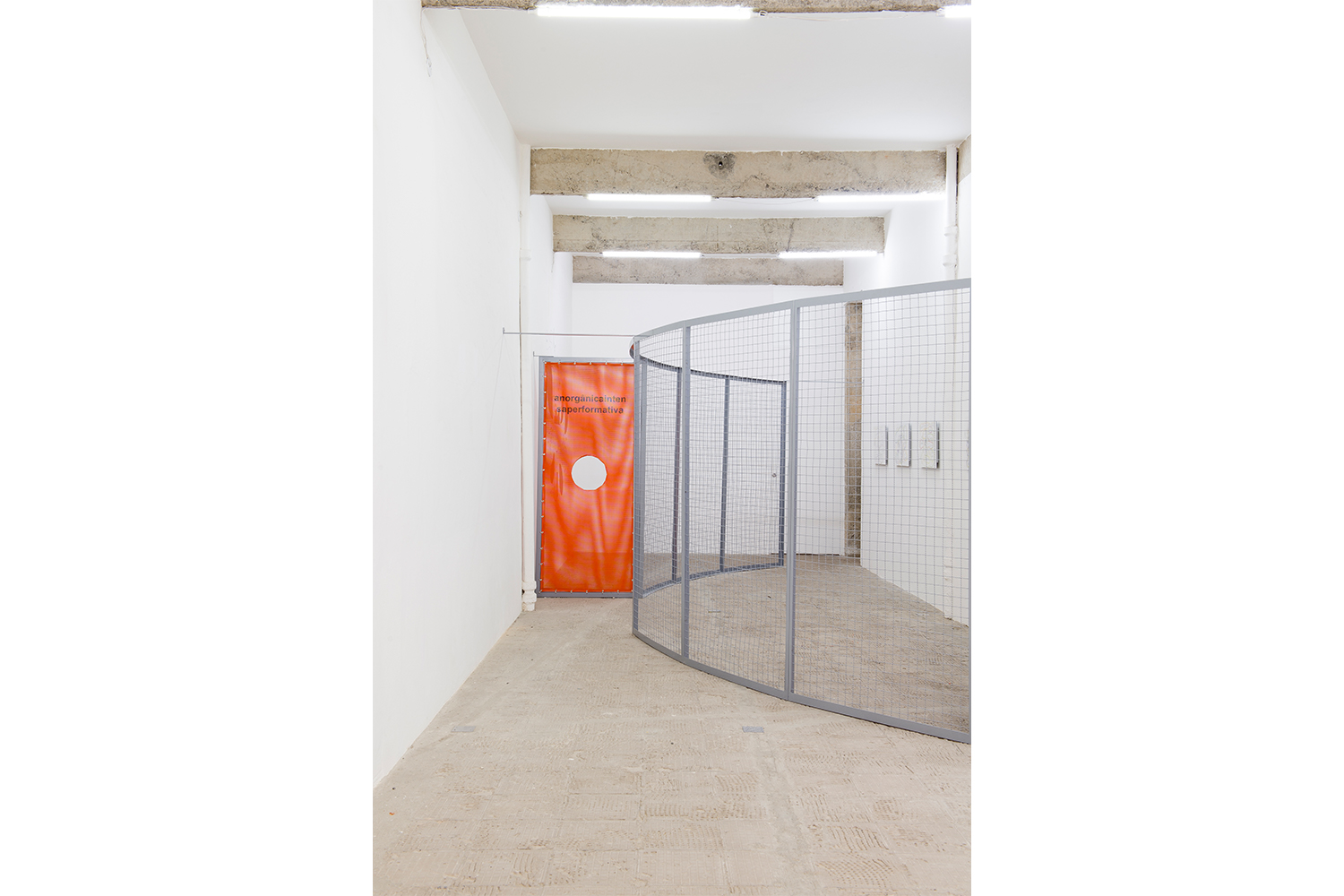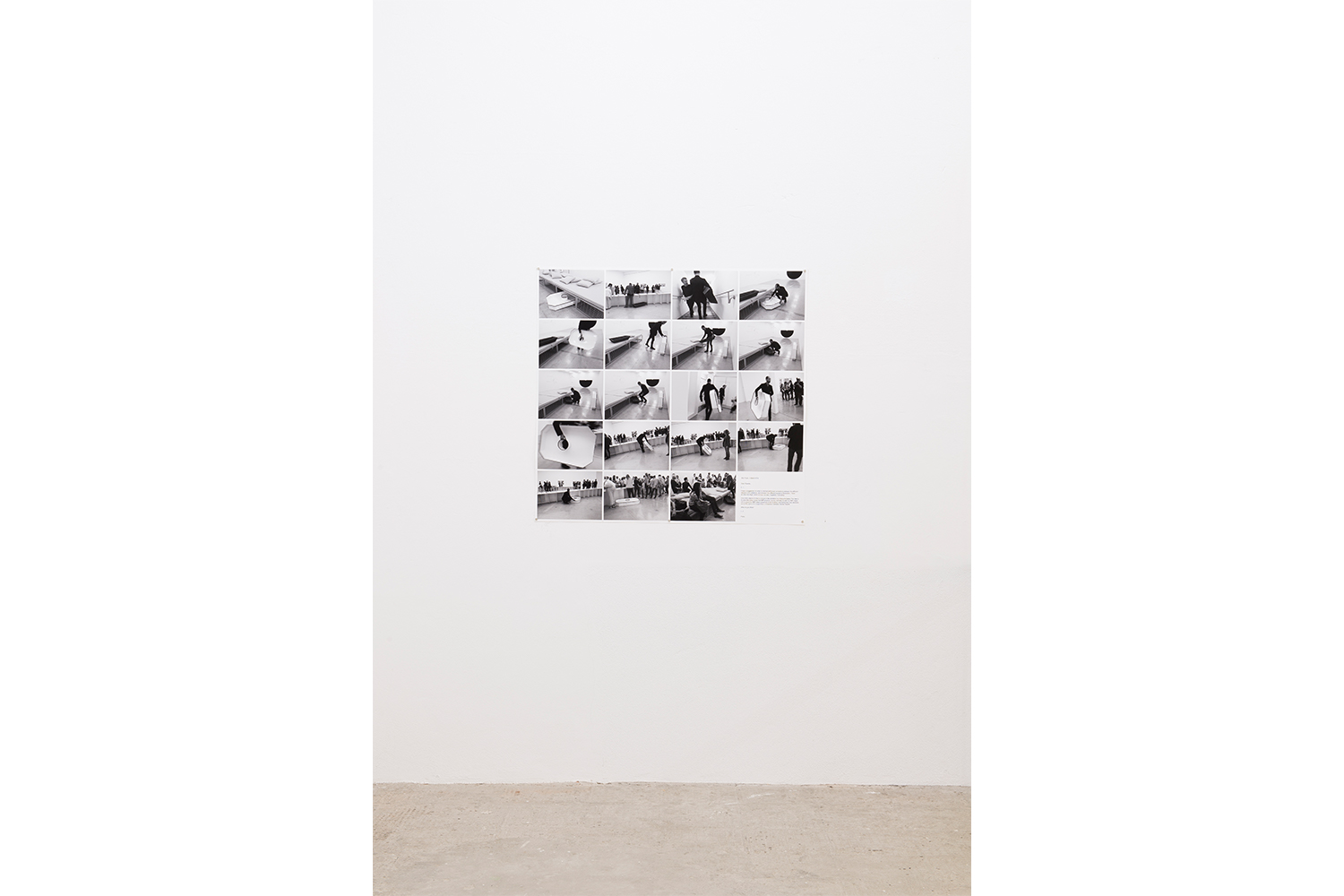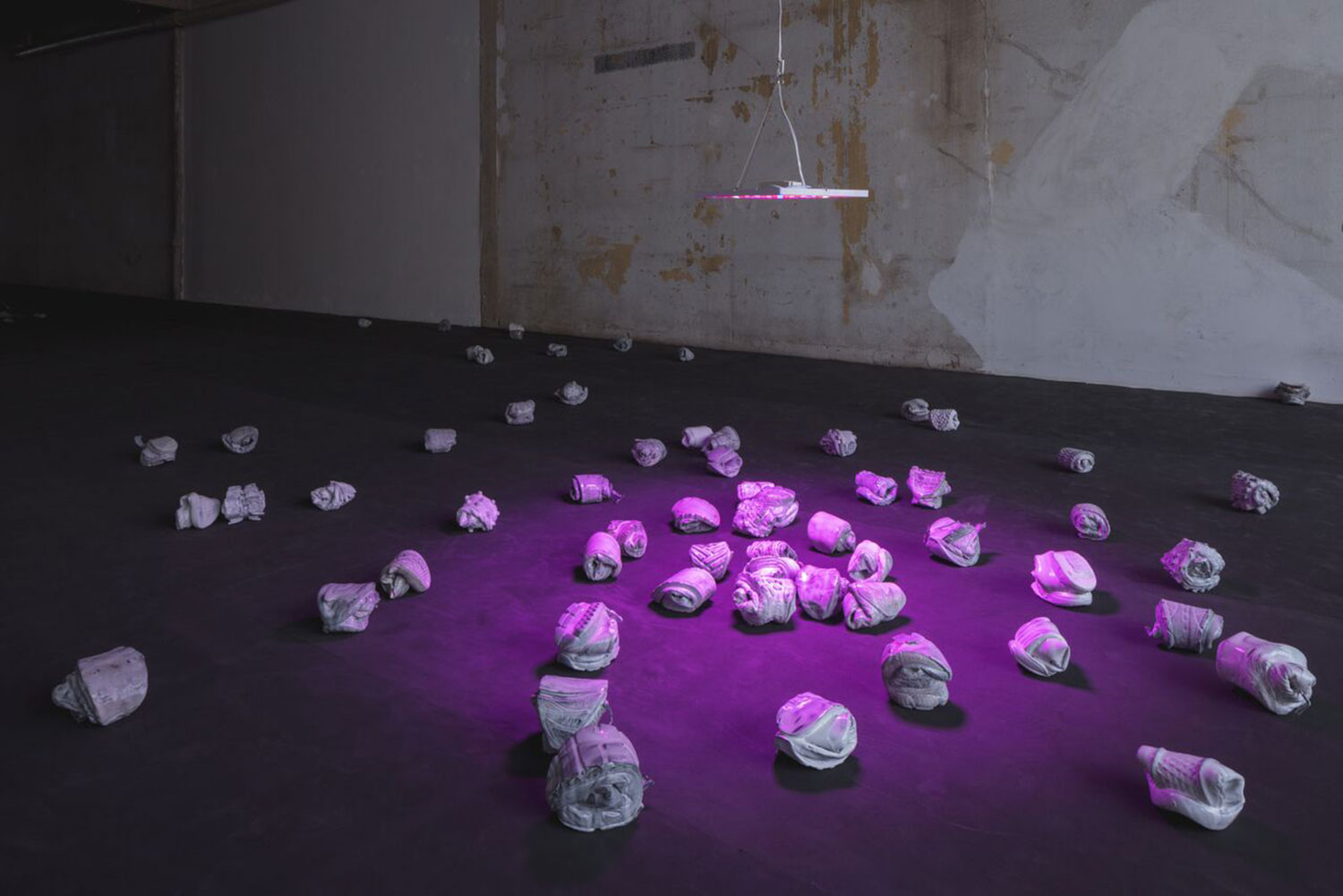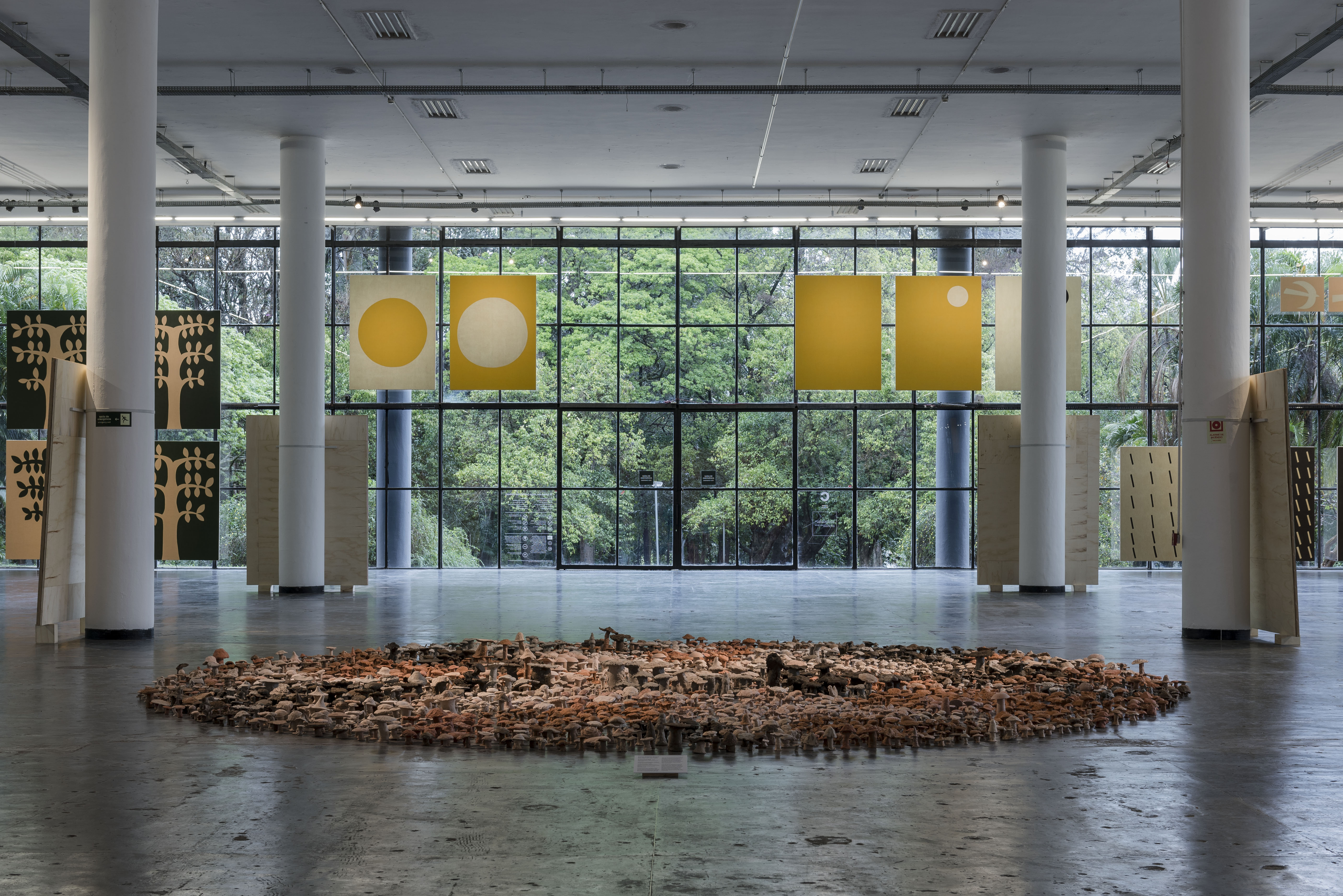Ricardo Basbaum’s solo exhibition “subhidroinfraentre” (subhydroinfrabetween) at Galeria Jaqueline Martins features previously unseen works in direct dialog with the gallery facilities. “subhidroinfraentre” was born as a set of four key concepts composed by small words referencing axes that have oriented the development of the artist’s work: subhidroinfraentre, floraparadoxanós, anorgânicaintensaperformativa, and bioconceitualismo.1 Since the 80s, Ricardo Basbaum has investigated art as an intermediate platform tying together communication, sensory experience, sociability, and language. Each medium is used in a bid to connect with exhibitiongoers, so as to distribute the proposed questions through contact.
The show has been built around and named after subhidroinfraentre (lago). The first piece created for the exhibit, it comprises a small lake filled with water whose outlines at once portray the images of a flower and a microorganism. It also references the artist’s constantly ongoing NBP project, a sonic piece created in partnership with the composer and sound artist Paulo Dantas. It features six microphones (including 2 hydrophones and 2 geophones) in and around the water, capturing sound from the water, the architecture, and the gallery space at regular time intervals. The audio material, which also includes prerecorded bits of the four key concepts, is digitally processed and played back into the room through a set of speakers.
In striving to create exhibitions that enable sharing and socialization experiences, Ricardo Basbaum has come up with a specific vocabulary of codes, forms, and proposals that come together in a unique way with each new project. His “diagramas” series (1994 – ongoing) – consisting of diagram prints on vinyl stickers applied directly onto the venue’s walls – might be the best known and most representative instance of this repertoire. This form of drawing/installation works as a sensory-conceptual cartography of words, signs, gestures, and movements. Precisely because they are not accompanied by labels offering objective translations, the diagramas attempt to involve viewers in the challenge of communication itself, with its ruptures, noises, and universal signs. For this exhibition, Ricardo Basbaum created three new works from this series.
“It was circa 1994 that I recognized and named the “Diagramas” as part of my art practice; they remained a diffuse presence for some time, along with a kind of graphic drive through drawing, printing, and writing. I progressively realized that my proposals pointed to a sort of dynamic that had to be emphasized through a more specific mapping strategy – one that could indicate a process unrelated to one or another specific medium or object, which nevertheless might explain the development of a project, an action strategy – discussing contemporary art and the artist’s role/image as a force in direct contact with the exterior (the subject, society).”
Another typical feature of Basbaum’s work that is seen in the show is his designing of pieces, often of furniture, that even further integrate viewers and artworks. Upon entering the exhibition room, visitors come upon a curved metal piece titled subhidroinfraentre (curva), purposely designed for the gallery’s lobby: at once sculptural and architectural, this life-size piece stands in the way of the visitor, who must decide which way to go – to remain in that space or seek other paths, which lead to one of the diagrams or the gallery’s main room.
In entering the gallery, as soon as they are faced with subhidroinfraentre (curva), visitors will encounter the series anotações projeto NBP (contexto subhidroinfraentre). Originally comprising 16 notes (anotações) – only six will be on show –, this series combines reflections and comments from the artist regarding his different projects and working series, which have been continuously unfolding since the 1990s. Lines and text mesh into fluid, diagrammatic designs. Also noteworthy is desembaraçar franquias solares dos povos ao contrário (para múltiplas vozes), a wheat-paste poster in which the artist introduces a sentence for collective vocalization that lovingly expresses “a potential formula of emancipation from negative values,” a necessary intervention and resistance tool in face of the assertive automatisms of control-based society.

